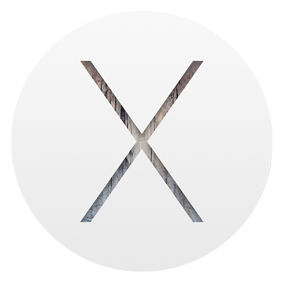
- Optimize my mac yosemite for mac#
- Optimize my mac yosemite software#
- Optimize my mac yosemite plus#
- Optimize my mac yosemite free#
Leaving thirsty web apps like Google Drive, Facebook, and Gmail open is also a bad idea. Having 100 tabs open at once is going to slow down your Mac. Your browsing habits can also slow down your system. Extensions make your browser use extra CPU and memory while browsing, and much of the time, the performance penalty isn’t worth it for the small amount of functionality they provide. Whether you use Safari, Chrome, Firefox, or something else, consider removing any non-essential browser extensions to speed things up. RELATED: Mac Users Should Ditch Google Chrome for Safari Limit Browser Extensions and Tabs You’ll get longer battery life on a MacBook and snappier performance on most machines compared to Chrome or Firefox, both of which are notorious memory hogs.
Optimize my mac yosemite for mac#
Safari is one of the best choices for Mac users since it is highly optimized for Apple hardware. Your choice of browser can have a big impact on your machine’s performance. Checking the box next to the app’s entry will hide it on startup.
Optimize my mac yosemite plus#
You can also add apps by clicking the plus “+” button if you like. Highlight one and click on the minus “-” icon to remove it. Head to System Preferences > Users & Groups and click “Login Items” to see a list of applications that start when you log in to your account.

You’re often better off waiting until a time when you need these applications to start them manually instead. Much of the time, these applications are not required. When you sign into, many other applications start at the same time. Prevent Apps From Starting Up in the First Placeĭisabling startup apps is a straightforward fix to a common complaint.
Optimize my mac yosemite free#
If you aren’t using the app in question or notice a particular web page is sapping your memory, kill the process to free up resources. Organize the “Memory” column by descending order to find out where all of your available physical memory has gone. You can do the same thing on the Memory tab. Be aware that many of the items in this list are system processes you won’t want to quit. Select an app and click on the “X” in the top-left corner to quit the process.

The higher the app appears in the list, the more CPU it is using. To find an app that is stressing your processor, click the CPU tab and then arrange the “% CPU” column in descending order. You can launch this tool via Spotlight (Command+Spacebar, then search for it) or find it in the Applications > Utilities folder.
Optimize my mac yosemite software#
If your Mac suddenly becomes unresponsive, slows down, or its fans spin up, you might want to find the offending software using Activity Monitor. RELATED: Why Do Mac Apps Stay Open When I Hit The Red X Button? Identify and Remove Resource Hogs with Activity Monitor If the app has crashed or appears unresponsive, right-click its icon and hold Option, then click on Force Quit. Apps like Steam often run by default in the background, sapping resources. Get into the habit of closing thirsty apps like Photoshop or Excel when you aren’t using them. You can also use File > Quit, or use the Command+Q keyboard shortcut while the app is focused. You can right-click, Command-click, or two-finger tap an app icon in the dock and click Quit to end the process. Running apps appear in the dock with small dots next to them. You may have only closed the window, and the app is still open as signified by its presence in your dock. In fact, most Mac apps will stay running in the background when you close their windows. Clicking the red “X” in the corner of a window won’t always close a Mac app.


 0 kommentar(er)
0 kommentar(er)
